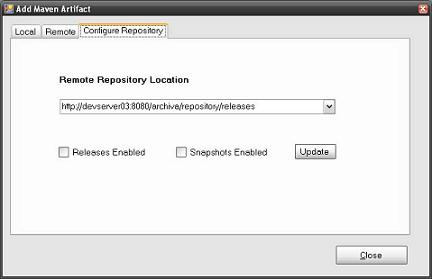A remote Maven repository can be configured using the Visual Studio IDE or it can be configured manually by adding information to the settings file.
To access a remote Maven repository you can configure it from within Visual Studio. Visual Studio must be open, the NPanday Build System must be running, and you must have a project loaded. Then:

NOTE: The repository is stored in a profile NPanday.id this profile is then added into the activeProfiles list as soon as an NPanday remote repository is added.
To manually add a remote repository, add the following lines in your C:\Documents and Settings\[user_home]\.m2\settings.xml file within the <profiles> </profiles> tag. Modify the values for the <repository> and <id> elements with the repository url you want to access.
<profile>
<activation>
<activeByDefault>true</activeByDefault>
</activation>
<repositories>
<repository>
<releases>
<enabled>false</enabled>
</releases>
<snapshots>
<enabled>false</enabled>
</snapshots>
<id>http://repo1.maven.org/maven2/</id>
<url>http://repo1.maven.org/maven2/</url>
</repository>
</repositories>
<id>NPanday.id</id>
</profile>
If the remote repository allows the snapshots or release artifacts to be stored then add the following lines:
<profile>
<activation>
<activeByDefault>true</activeByDefault>
</activation>
<repositories>
<repository>
<releases/>
<snapshots/>
<id>http://repo1.maven.org/maven2/</id>
<url>http://repo1.maven.org/maven2/</url>
</repository>
</repositories>
<id>NPanday.id</id>
</profile>